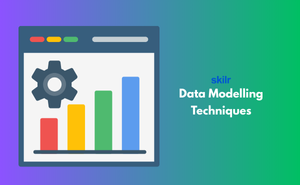👇 CELEBRATE CLOUD SECURITY DAY 👇
00
HOURS
00
MINUTES
00
SECONDS

The Data Modeling Techniques course focuses on teaching individuals various methodologies and approaches used to design and create data models for databases, applications, and analytical systems. It covers conceptual, logical, and physical data modeling techniques, normalization, denormalization, and data modeling best practices. Students learn how to translate business requirements into effective data models that support data storage, retrieval, and analysis. The Data Modeling Techniques exam assesses students' understanding of data modeling concepts, methodologies, and techniques. It typically includes questions and problems covering topics such as entity-relationship modeling, relational database design, normalization, denormalization, and data modeling tools.
The Data Modeling Techniques exam is suitable for individuals interested in pursuing careers or roles involving database design, data architecture, or data management. It's ideal for:
The Data Modelling Techniques Exam covers the following topics -
Industry-endorsed certificates to strengthen your career profile.
Start learning immediately with digital materials, no delays.
Practice until you’re fully confident, at no additional charge.
Study anytime, anywhere, on laptop, tablet, or smartphone.
Courses and practice exams developed by qualified professionals.
Support available round the clock whenever you need help.
Easy-to-follow content with practice exams and assessments.
Join a global community of professionals advancing their skills.
Earning the certification can lead to improved job prospects, recognition as a qualified data modelling professional, and opportunities for advancement into roles like Data Architect, Data Analyst, or Enterprise Architect.
Familiarity with tools like ER/Studio, Lucidchart, Oracle SQL Developer Data Modeler, Microsoft Visio, or PowerDesigner is advantageous for handling modelling questions effectively.
Yes, this certification is widely valued in sectors such as IT, finance, healthcare, retail, and consulting, especially where data architecture and business intelligence systems are critical.
The passing score may vary by provider but is typically set between 65% and 75%, depending on the exam's difficulty and question weighting.
Most certification exams in this domain are structured to be completed within 90 to 180 minutes, depending on the complexity and the issuing organization’s format.
Candidates are advised to study industry-standard modelling techniques, practice with modelling tools, review sample diagrams and normalization exercises, and use official prep materials or instructor-led courses.
While not mandatory, practical experience in data modelling or related roles such as data analysis, architecture, or engineering will significantly enhance exam readiness and performance.
The exam typically includes multiple-choice questions, diagram interpretation, scenario-based questions, and may feature case studies or practical tasks, depending on the certifying authority.
There are no strict prerequisites, but candidates are expected to have foundational knowledge in database concepts, data structures, and experience with data modelling tools and techniques.
The exam is designed to validate a candidate’s proficiency in applying various data modelling methodologies to structure data effectively for transactional systems, analytics, and enterprise data integration.